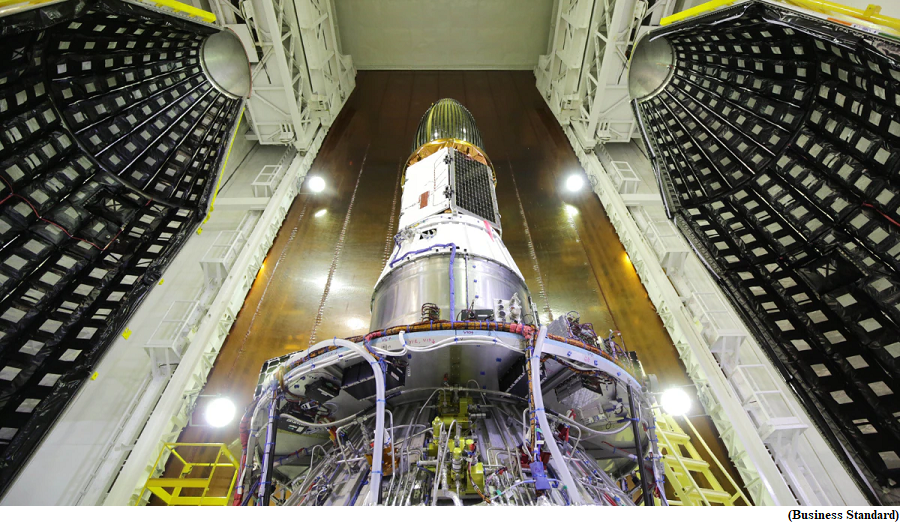2D nanoflakes of material extracted from iron ore can protect sensitive optical equipment from light induced damage (GS Paper 3, Science and Technology)

Why in news?
- Recently, the researchers from Raman Research Institute, Bangalore, has come up with a new and highly efficient optical limiter using a novel 2D material, ‘hematene’.
Optical limiters:
- Nanoflakes of a material called hematene extracted from iron ore have been found capable of withstanding and acting as shield from high laser intensities.
- Hence it could be used to make devices called optical limiters that can protect sensitive optical equipment from light-induced damage.
Key Findings:
- They found that 2D nanoflakes of hematene, a material extracted from iron ore or hematite are capable of withstanding very high laser intensities.
- They exhibited excellent optical limiting of green laser light (532 nm) while maintaining a high linear transmission (about 87%) for low-intensity light.
- The nanoflakes of lateral dimensions less than 10 nm, prepared by applying ultrasonic waves to hematite in liquid medium ( facile exfoliation process) for a definite period to exfoliate the 2D nanoflakes of hematene were also found to be highly stable after year-long storage under ambient conditions, indicating tremendous potential as an optical limiter for futuristic applications.
Applications:
- Radiation from laser sources is highly concentrated and powerful and can be detrimental to sensitive equipment such as sensors, detectors, and other optical devices.
- When the input intensity increases optical limiters control the amount of light that passes through, thereby preventing damage to the optical component.
- These devices are often useful in laser technologies, military, telecommunications, aircrafts, and scientific research in several ways.
ISRO PSLV C56 set to be launch
(GS Paper 3, Science and Technology)
Why in news?
- The Indian Space Research Organisation (ISRO) is set to launch the PSLV-C56, a significant mission following the Chandrayaan-3.
- The launch will take place from the first launch pad of the Satish Dhawan Space Centre in Sriharikota, Andhra Pradesh.

What is PSLV-C56 mission?
- The PSLV-C56, configured in its core-alone mode similar to the previous PSLV-C55 mission, will carry the DS-SAR satellite as its primary payload.
- This 360 kg satellite, developed under a partnership between Singapore's Defence Science and Technology Agency (DSTA) and ST Engineering, will be launched into a Near-equatorial Orbit (NEO) at an inclination of 5 degrees and an altitude of 535 km.
DS-SAR satellite:
- The DS-SAR satellite is equipped with a Synthetic Aperture Radar (SAR) payload developed by Israel Aerospace Industries (IAI).
- This advanced technology allows the DS-SAR to provide all-weather day and night coverage, capable of imaging at a 1m-resolution at full polarimetry.
- Once operational, the DS-SAR will support the satellite imagery requirements of various agencies within the Government of Singapore.
- Additionally, ST Engineering plans to use the satellite for multi-modal and higher responsiveness imagery and geospatial services for their commercial customers.
Six co-passenger satellites:
- Alongside the DS-SAR, the PSLV-C56 will also carry six co-passenger satellites.
- These include
- VELOX-AM, a 23 kg technology demonstration microsatellite;
- ARCADE, an experimental satellite;
- SCOOB-II, a 3U nanosatellite flying a technology demonstrator payload;
- NuLIoN by NuSpace, an advanced 3U nanosatellite enabling seamless IoT connectivity in both urban and remote locations;
- Galassia-2, a 3U nanosatellite that will orbit at low earth orbit; and
- ORB-12 STRIDER, a satellite developed under an international collaboration.
Where is Chandrayaan-3?
- ISRO has confirmed that Chandrayaan-3 successfully completed its fifth orbit-raising maneuver on July 25 and is now in a 71351 km x 233 km orbit around Earth.
- The next firing, the TransLunar Injection (TLI), is planned for August 1, 2023.
- The mission aims to conduct scientific experiments to study the lunar environment, including its history, geology, and potential for resources.
- The soft landing on the Moon is expected on August 23 or 24. The mission's success will mark a significant achievement for ISRO and contribute valuable data to our understanding of the Moon.



